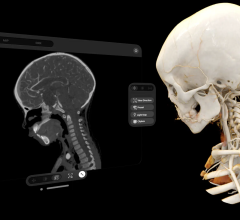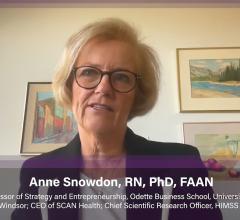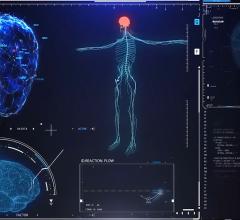
Kim Phelan, Editor
It struck me the other day that while thousands of healthcare information technology (HIT) executives flock to San Diego for the HIMSS 06 annual conference and exhibition, it’s quite conceivable that thousands of cardiologists are unaware of the important meetings and showcased technologies that will comprise the five-day convention beginning Feb. 12.
It’s certainly natural that cath lab physicians would not closely follow the professional development activities of their hospital IT colleagues — but the fact that so large and significant an event may unfold without the knowledge or participation of most cardiology professionals rather illustrated for me the seamless and even invisible ways that HIT wraps and supports the interventional, highly patient-centric work of the cardiologist. Because of sophisticated advancements in technology and intelligent implementation by CIOs and other administrators, cardiology is not only unencumbered but empowered to develop the best treatment and care for their often-desperately diseased patients.
My chat between the holidays with McKesson’s Sunny Sanyal, president of the company’s Clinical Solutions division, reinforced how transparently and ingeniously the latest and greatest image and information management systems are able to support the diagnostic, procedural and reporting facets of the cardiologist’s work. A Q&A with Sunny — “Creating the Cardiologist’s Cockpit” — begins on page 34, immediately following the product preview pages we’re featuring on the HIMSS show (p. 29).
Among the insights he shares is an explanation of the unique needs of the cardiology department and how a tailored cardiovascular information system (CVIS) puts a wealth of structured patient data and images at the doctor’s fingertips, instantly. He also underscores the very real and imminent arrival of Pay for Performance policies, under which hospitals and cath labs will both survive and thrive by investing in more efficient automation.
HIT products and news are just one segment of the many useful take-aways we’ve assembled this issue, which also includes coverage of a serious alert flashing across cardiology’s radar screen worldwide. Preventing contrast-induced nephropathy (CIN) — irreversible and sometimes deadly injury to the kidneys, occurring most often in high-risk patients with specific comorbidities — has received much attention as the rate of incidence climbs. We explore this “Real and Present Danger” beginning on page 18, sandwiched between two pull-out product comparison charts that are coincidentally related to the CIN prevention topic: contrast media injectors and cardiovascular MR machines.
Additionally, I invite you to take a look at a new cardiac ablation technique we learned about at University of Chicago’s electrophysiology department (p. 39), plus the shrinking size and growing capabilities of ICDs (p. 43), and a profile of University of Michigan’s fascinating work with heart-shaping devices (p. 41), written by our new associate editor, Ryan Hiett.
As always, thanks for reading!


 May 01, 2024
May 01, 2024 








